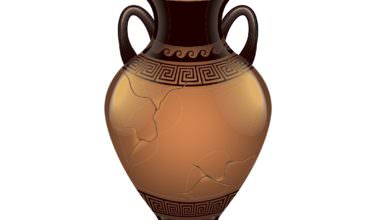About Hydra – Multi-Headed Greek Mythological Beast
Comments Off on About Hydra – Multi-Headed Greek Mythological Beast
 The Lernaean Hydra, the Hydra of Lerna, or the Hydra as the creature is most often referred to, is a fearsome and memorable creature in Greek mythology. This beast has multiple heads and a serpentine body, and it lives in the water. It is also a creature that is difficult to defeat, but over time, Hercules was ultimately successful. However, before Hercules did kill him, the Hydra was a formidable creature. Here’s a look at the Hydra’s story:
The Lernaean Hydra, the Hydra of Lerna, or the Hydra as the creature is most often referred to, is a fearsome and memorable creature in Greek mythology. This beast has multiple heads and a serpentine body, and it lives in the water. It is also a creature that is difficult to defeat, but over time, Hercules was ultimately successful. However, before Hercules did kill him, the Hydra was a formidable creature. Here’s a look at the Hydra’s story:
The Hydra’s Lair Was in the Lake of Lerna
Most serpent-like creatures have a lair and the Hydra is no exception. It lived in the Lake of Lerna in Argolid, which is why it was referred to as the Lernaean Hydra or the Hydra of Lerna. This was also where the myth of the Daughters of Danaus, about a man who had fifty daughters, took place. Lerna is actually one of the entrances into Hades, and the Hydra stood guard, preventing those who weren’t allowed to enter from getting through. Lerna is also a real place, and there is an archaeological site there today that is a known spiritual site for the Greek mythological god, Argos. It was ultimately here that the Hydra met its end as Hercules eventually slayed the Hydra as part of his Twelve labors.
Origins of the Hydra
So, where exactly did the Hydra come from? Like many of the figures in Greek mythology, the Hydra’s parentage is clearly explained in Hesiod’s Theogeny, the work that talked about the origins of the gods, goddesses, creatures, and other figures in Greek mythology. He expained that the Hydra was the child of two other creatures, Typhon and Ekhidna. The creature is usually depectd as having nine heads, and when one head is cut off, it promptly grows back. It’s also said to have poisonous breath that kills people on contact.
Twelve Labors of Hercules
Ultimately, the Hydra became one of the Twelve Labors of Hercules. It was the second labor that he completed, and slaying the creature initially posed some challenges. When he would cut each head individually, they would all grow back. After a fierce battle, he finally realized that if he cut off all the heads at once, the creature would die for good. Thus, Hercules successfully completed his second labor.
Another part of this story of his death, however, is that the Hydra had poisonous blood. After he successfully slaid the creature, he dipped his arrows into its blood. These poisonous arrows became a part of his extensive weapons aresenal, and he later used them throughout the rest of his labors to kill other creatures.
As you can see, the Hydra of Lerna was one of the most terrifying and unique creatures in Greek mythology. Although he eventually met his end at the hands of Hercules, the legacy did live on. When Hercules dipped his arrows into its blood, he was able to complete many of his other labors.
Sources:
Categorized in: Greek Mythology
This post was written by Greek Boston
Share this Greek Mythology Article:





